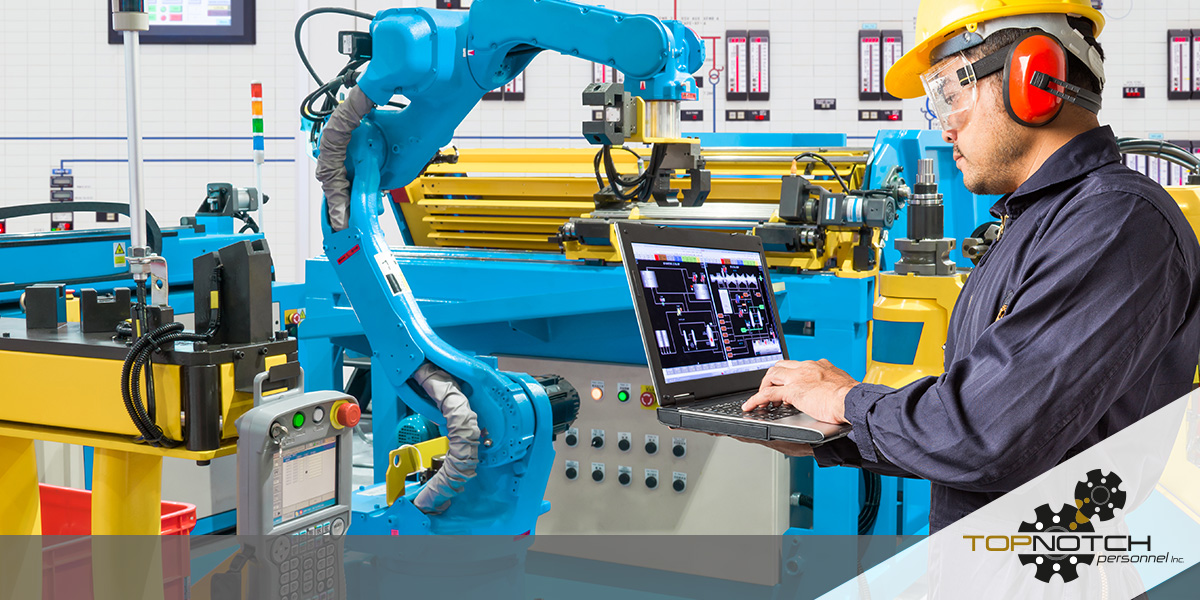Robotics and digital technologies have been revolutionizing manufacturing and various other industries for decades. However, the construction industry has been relatively slow to adopt robotics, and because of this, there may be lingering questions within the industry about the benefits of this rapidly developing technology.
Of course, it’s human nature to be skeptical of change, especially when the change involves something as radical as automated robotics. We only need to look at science fiction movies like Terminator or The Matrix to see that we have an innate fear of technology running amok.
In construction, those not used to working alongside robotics may fear that the technology will completely replace them and their co-workers. But like the steam engine, the internet, and other highly disruptive technologies, robotics has been empowering humans, not replacing them. Construction robotics are currently providing much greater efficiency, safety, and cost savings, with little cost to human employees.
The current state of robotics technology cannot completely replace manual labor, nor is it expected to reach that capability anytime soon. Currently, robotics is used in construction to assist manual workers with arduous, repetitive tasks. Rather than threatening their livelihoods, robotics is helping to keep workers safer and gainfully employed. This technology takes efficiency, productivity, and accuracy to the next level, increasing profit margins for those companies that use it.
Even as robotics become more prolific throughout the construction industry, they still need to be monitored, maintained, and repaired. Over time, human employees will shift from doing physical work to acting more like managers and maintenance workers.
Learn from a Construction Staffing Agency: How Does a Robot Impact Construction?
The current state of construction robotics facilitates faster work while making construction safer and cheaper.
One of the biggest ways robotics impacts construction is by streamlining operations. To be fair, the technology partially eliminates the need for manual labor on certain specific tasks. However, this frees up human workers to take on more complex tasks, such as those that involve creativity or critical thinking. People working on construction sites are much more likely to address inefficiencies or develop workarounds to major problems when they don’t need to be focused on simple tasks.
Robotics is also making construction companies more versatile. The value of this versatility was never more evident than during the COVID-19 pandemic. With some experts predicting that pandemics and pandemic-associated lockdowns will occur more frequently in the future, construction companies that leverage automation will be better able to adapt to social distancing, rotating schedules, and other sudden changes to a workplace environment.
The construction industry can be cutthroat, and companies that can effectively leverage robotics also stand to gain a competitive advantage. Workers freed up by robotics are better able to contribute in ways that add more value. Also, employees are working on more high-value tasks, which boosts job engagement. This has major knock-on positive effects on productivity and employee retention, further supporting a company’s competitive advantage.
Companies that leverage construction robotics also stand to enhance their brand value. These companies are better positioned to deliver quality results in shorter time frames with greater reliability. This helps to attract new customers, as well as retain existing customers. Over time, satisfied customers become brand advocates for a company, which helps to draw in new business. Additionally, companies that leverage cutting-edge technology are more likely to appeal to high-performing individuals in the labor market, making it easier to recruit these individuals. Companies that are better able to attract and keep top talent always have an advantage over those companies that cannot.
Types of Robots
- Brick Layering robot – In 2017, Vice News profiled a robot named SAM from Construction Robotics that could lay 3,000 bricks per day, which is three times more than a top-performing human. Brick-laying robots like SAM are designed to deliver consistent outcomes, even in uncontrolled construction environments. These robots build walls and structures based on 3D digital models. These robots offer faster work, less waste and lower costs. However, they are not completely autonomous. SAM still needed two human co-workers to feed it materials and perform finishing work.
- 3D printing robot – In October 2022, design company Hannah began work on the first multi-story structure in the United States created using a 3D printer. Also known as additive manufacturing, 3D printing in the construction industry uses automated robotics, computer programming and artificial intelligence to lay down structural material. These robotics fabricate structures with a high degree of accuracy by using 3D digital models as guides. While the printer for the Hannah job can create a structure on its own, a team will be needed to move the printer to different locations during the fabrication process.
- Robots assisting in Construction Site Security – According to data from the National Equipment Register, theft from construction sites annually costs the industry between $300 million and $1 billion. Less than 25 percent of construction theft is ever recovered. Under these statistics, construction companies are increasingly adopting automated site surveillance. Using artificial intelligence and video surveillance, suspicious behavior can be flagged up as it happens, enabling companies to catch perpetrators.
There are also many different construction robotics projects currently in development, and some of them are expected to reach the construction site within the coming decade.
One project in development is focused on performing routine road maintenance and improvement. Using an automated and integrated system, robots are being developed to perform road maintenance tasks like ceiling cracks, patching potholes, rejuvenating asphalt and paint marking. This area of construction robot development also includes visual inspections and automated control of traffic cones.
Another key area of development for construction robotics involves the use of digital twins or exact three-dimensional digital copies of a physical structure. As part of the effort to evolve construction into the metaverse, the creation of digital twins requires the gathering of real-world information on a structure. Robotics are currently being developed to collect autonomously outdoor and indoor environmental data on construction sites. This data can then be collected and processed to create a digital twin.
Benefits of Using Robots & Technology in Construction
The use of robotics in construction is already translating into several key benefits.
1. Construction Site Safety for Workers
When robotics and technology are used to decrease physical labor and repetitive tasks on a construction site, the site becomes much safer. Workers can also control robotics from a safe location, removing the need for workers to access locations or take up physically unsafe positions.
2. Increased Efficiency
Because robots do not get bored, distracted, or tired when working, their use on repetitive tasks results in much greater work efficiency.
3. More Accurate Results
State-of-the-art construction robotics base their construction activities on detailed digital models, and as a result they are extremely precise. When the odds of human error are significantly reduced, it leads to more accurate overall results.
4. Save Time & Costs
Construction companies must make an initial investment in robotics technology, but over time, that investment produces a significant return. Because robotics are faster and more accurate than manual workers when considered at scale, their use results in cost and time savings.
Final Thoughts
Because there is so much variation from construction site to construction site and within an individual site, robotics has not been adopted at scale as they have been in manufacturing and other industries. Hence, construction robotics is still in an “emerging” stage. However, this technology is already making significant inroads and yielding benefits in the process.
As for concerns about humans being replaced, that has yet to happen and likely won’t happen any time soon. The construction robots of today still require significant assistance from humans. As such, construction robots are mostly augmenting the work of humans. Even if the technology quickly took massive leaps forward, humans would still be needed to monitor, maintain, and repair these robots.
Connect with a Construction Staffing Agency in Wichita
When looking for a construction staffing agency in Wichita, KS, that understands the industry of today and tomorrow, look no further than Top Notch Personnel.
As a top staffing and recruiting agency for the construction industry, we specialize in finding talented individuals who appreciate the latest technology and look forward to learning about the technical future of their industry. Rather than seeing robotics are a replacement for construction workers, we are happy to continue debunking this theory by connecting our clients to forward-thinking individuals for their open positions.

